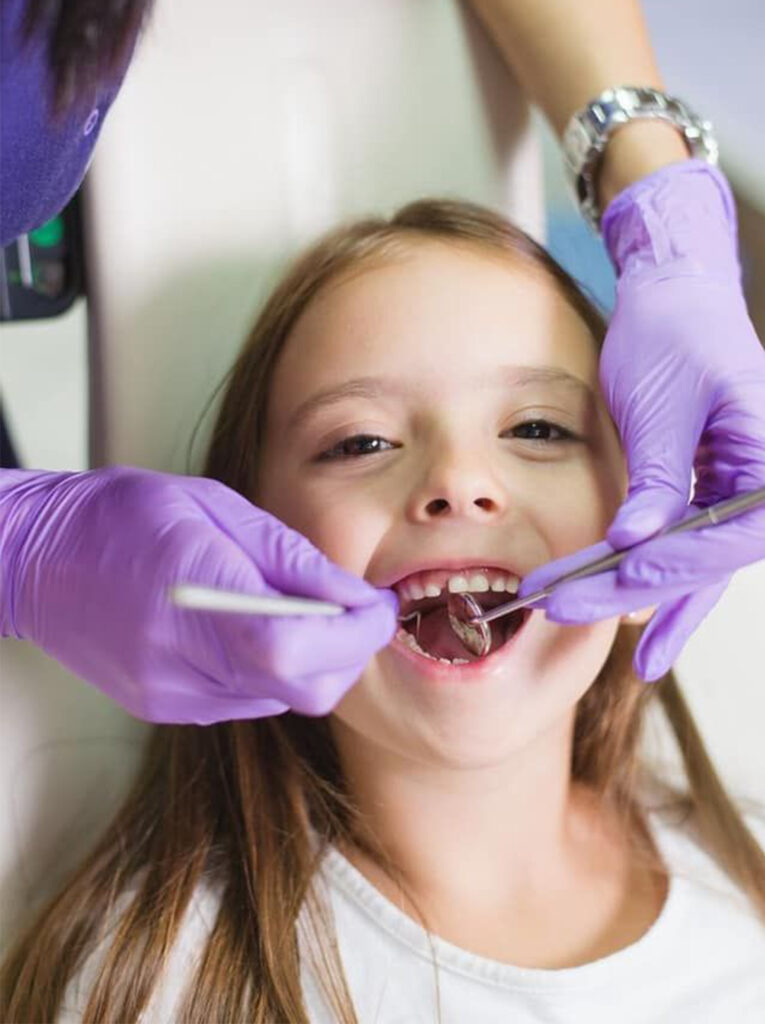At present, the toothbrushes sold on the market mainly use bristles of nylon (PA), (DuPont), PBT, PP, PET composite bristles, etc.
(1) Nylon brush filaments are generally divided into ordinary filaments and DuPont filaments. DuPont silk is representative of high-quality nylon yarn. It is thick up and down, with a rounded top, strong, abrasion-resistant, and strong in cleaning. It is suitable for the oral environment in Europe and the United States, and Philips in the United States is a typical brand that uses DuPont.
(2) PBT sharpened wire. Japanese Toray Group invented and produced it, because of its high softness, high resilience, high hardness, low water absorption, high material manufacturing cost, thick and thin bottom end, made into a high-end soft toothbrush. Suitable for more delicate Asian mouths. Lion King, Huibaishi, and Dr. Bei are typical brands that use Toray brush filaments. (Note: Only imported toothbrushes from Lion King and Huibaishi use these bristles). The Pap toothbrushes sold by Dr. Bei at Xiaomi use Toray PBT sharpened wire.
(3) PP bristles are mostly used in hotels or cheap toothbrushes. Usually, the bristles fall after brushing 1 or 2 times.
(4) PET bristles are a composite material with a price between PP and nylon. It is similar to nylon but has poor resilience, but usually, the bristles will fall out in about a week.
At present, the high-end toothbrush bristles on the market are mainly DuPont and Toray. Many toothbrush brands choose DuPont according to their inertia, but in fact, Toray sharpened bristles are suitable for Asian oral cavities! However, Toray’s imported sharpened wire is relatively high-end and the cost is also high. Japanese brand toothbrushes sold in China have adopted an alternative to brushing wire. Currently, only Dr. Pei directly cooperates with Japanese Toray imported brush filaments.
Attach the general science of brushing knowledge
Notice! Most oral diseases (periodontal disease, tooth decay, bad breath, etc.) are caused by improper tooth brushing! Cleaning the toothbrush is the best way to prevent it! Get in the habit of brushing your teeth in the morning and evening, and gargle after meals!
1. How many times do you brush your teeth per day?
Brush your teeth every morning and evening, brush your teeth for 3 minutes, pay attention to cleaning the gingival sulcus (the junction of teeth and gums). If possible, rinse your mouth after lunch and brush your teeth for half an hour after eating.
2. The correct way to brush your teeth?
Pap brushing method. The direction of the toothbrush bristles should be at a 45-degree angle to the teeth. Gently insert the toothbrush into the gingival sulcus at the junction of the teeth and the gums. Vibrate the toothbrush horizontally with a small amplitude. Vibrate 20-30 times at each location to brush the residue in the gingival sulcus. Clean, and finally brush the occlusal surface. The outer and inner sides of the teeth also need to insert the toothbrush bristles into the gingival sulcus to vibrate horizontally. The trembling of the assembly means trembling horizontally, but it is not a sawing horizontally. The difference between chattering and sawing is the magnitude of brushing. The see-saw brushing method is not only easy to brush the teeth upright first and clean the gingival sulcus. Then brush sideways a small amount, do not use too much force when brushing sideways, it will damage the tooth enamel.
3. Is the toothpaste wet?
Toothpaste does not need to be wet
4. When to rinse your mouth?
Rinse your mouth after meals!
5. Can I eat before going to bed?
Do not eat after brushing your teeth before going to bed, especially sweets with high sugar content, which can cause tooth decay (tooth decay).
6. What’s the matter with the bleeding after brushing your teeth?
There may be gingivitis, especially the inaction of bleeding, which may be caused by inadequate cleaning for a long time, so focus on cleaning. There is no need to be afraid of this situation. You should continue to use dental floss to clean your teeth thoroughly to facilitate the removal of the factors that cause gum inflammation (soft scale, dental plaque, etc.) on the teeth. If there is no improvement for a long time, you should go to a dental hospital to find out the bleeding. Reason and timely treatment.
8. Can I drink strong tea?
Tea contains fluoride, which can prevent tooth decay and periodontal disease, so you can drink it frequently. After drinking tea, gargle and brush your teeth to avoid pigmentation.
9. What is dental plaque?
Teeth are not acid-resistant. There are many kinds of bacteria in the oral cavity. Food residues will be fermented by the bacteria to produce acid, which will corrode the teeth. Dental plaque forms within 12-24 hours, and the plaque slowly turns into gingivitis, dental calculus, and periodontal disease. Dental plaque is most likely to form in the gingival sulcus and interdental sulcus. When brushing your teeth, you should pay attention to cleaning the interdental sulcus and gingival sulcus.
10. What is the difference between an electric toothbrush and a manual toothbrush? Will electric toothbrushes replace traditional toothbrushes?
When many people brush their teeth manually, because they use the incorrect horizontal brushing method and the brushing force is too strong, it is very easy to damage the teeth and gums. However, the rapid rotation or vibration of the brush head of the electric toothbrush decomposes the toothpaste into fine particles in a short time. The foam flows between the teeth and between the teeth, which is more conducive to cleaning. At the same time, the trembling of the bristles can also accelerate the blood circulation in the oral cavity, which has a better massage effect on the gum tissue. There are many types of electric toothbrushes, and the common one is to clean the teeth by vibration and rotation. Research has confirmed that electric toothbrushes have advantages over traditional manual toothbrushes in terms of plaque control and reduction of gingivitis. In addition, electric toothbrushes can also be equipped with smart functions such as brushing reminders, making them more convenient and reliable to use. A new type of electric toothbrush, a sonic electric toothbrush, has appeared in recent years. The vibration frequency of its bristles or brush head is the same or similar to that of the sonic wave. The bristles move quickly at a frequency similar to the sonic vibration frequency, which has a stronger cleaning effect than traditional electric toothbrushes. Sonic electric toothbrush). When using, just place the sonic vibration electric toothbrush gently on the tooth surface, and then move it slowly. Studies have shown that sonic toothbrushes are safer than manual toothbrushes. They can be cleaned with almost no pressure on the teeth or gums. They are not harmful to soft and hard tissues and are more conducive to maintaining the health of the gums.
Clinical studies have confirmed that, compared with sonic toothbrushes, manual toothbrushes and rotary electric toothbrushes are more likely to cause tooth wear. For electric toothbrushes, brushing power at 90~150g will increase tooth wear. Rotary electric toothbrushes are better than sonic toothbrushes. The average wear and tear of vibrating toothbrushes are 4~5 times. Therefore, it is recommended that consumers choose a sonic toothbrush with a pressure sensing device to guide the appropriate brushing strength to avoid damage to tooth enamel, and at the same time, the removal effect of plaque is better than ordinary electric toothbrushes. It is an ideal tool for home oral care.
But as long as you pay attention to the method of brushing your teeth, you can achieve sufficient cleaning results with ordinary toothbrushes. Usually pay attention to oral hygiene, proper exercise to enhance physical fitness, and enhance self-immunity will also reduce oral problems to a certain extent.
Due to the fixed frequency and strength of electric toothbrushes, if children cannot master the correct method of use, it is easy to damage the immature gums, cause red and swollen gums, and cause serious wear and tear on the teeth, and even cause periodontitis, so children use It is best to have parental supervision and guidance when using electric toothbrushes.
11. Is it necessary to use a water floss/flushing device?
Most people think that only using a toothbrush is enough to clean the teeth. This is not enough, because the toothbrush can clean only about 70% of the surface of the tooth, and the gap between the two teeth is only through the toothbrush. The ones that cannot be cleaned are easy to remain and accumulate food residues, dental plaque, and soft dirt. At this time, auxiliary cleaning tools must be used to help! Both dental floss and water dental floss/flushing device can be used. The flushing device can flush this high-pressure pulse water jet to any part of the oral cavity through the nozzle. The impact of this high-pressure pulse water flow is a kind of flexible stimulation, not only will not hurt any part of the oral cavity but also massage the gums. The dental flusher can use the impact force to flush out the food residues impacted between the teeth, and will not cause damage to the gums.
For friends who do orthodontics, the dental flusher will be very helpful to the brackets and tooth surfaces that are not easy to clean with a toothbrush. It is highly recommended!
12. How often do I wash my teeth?
Adults should go to a professional dental hospital to wash their teeth every six months to a year. Carry out oral examinations every year.


